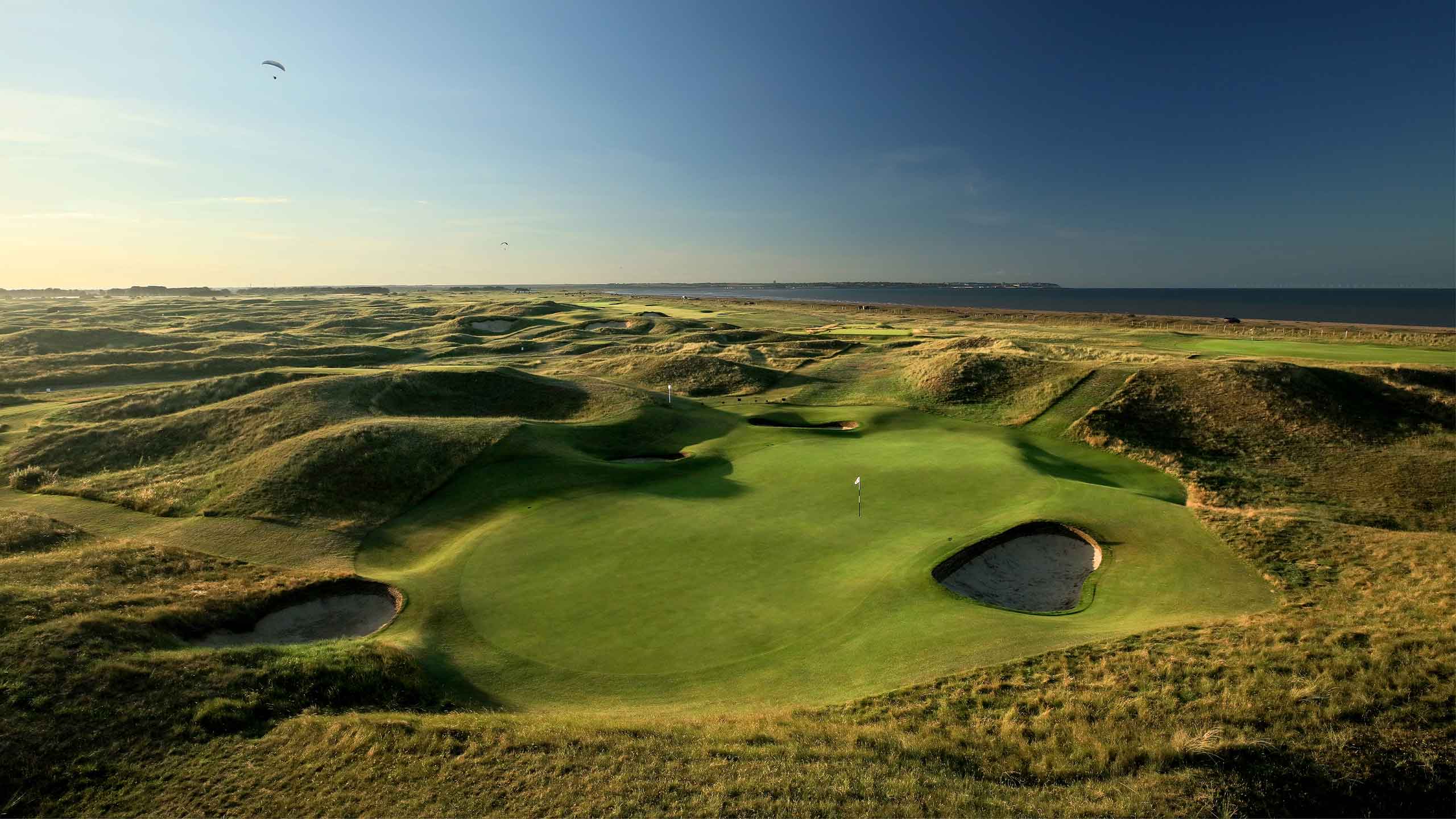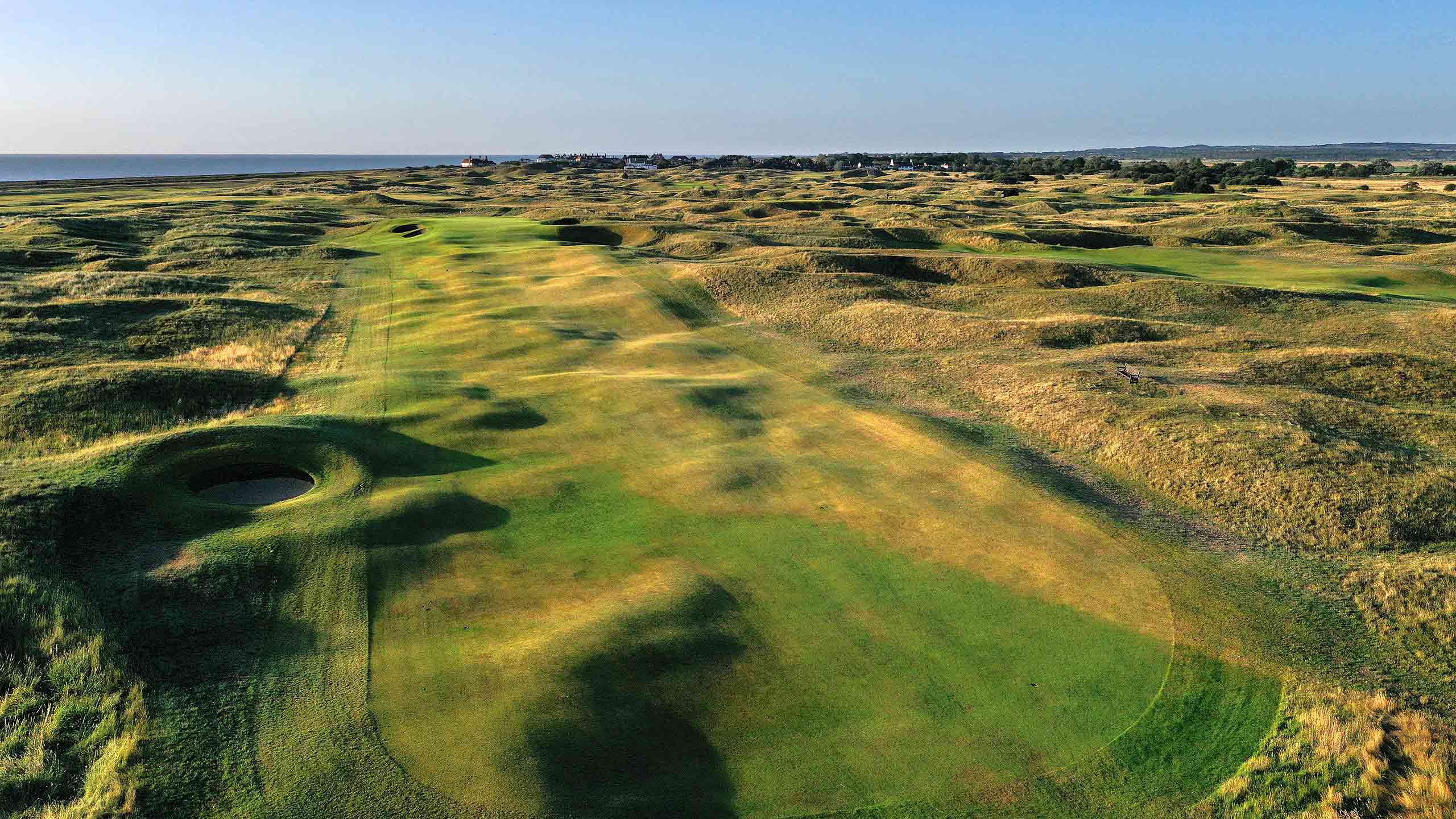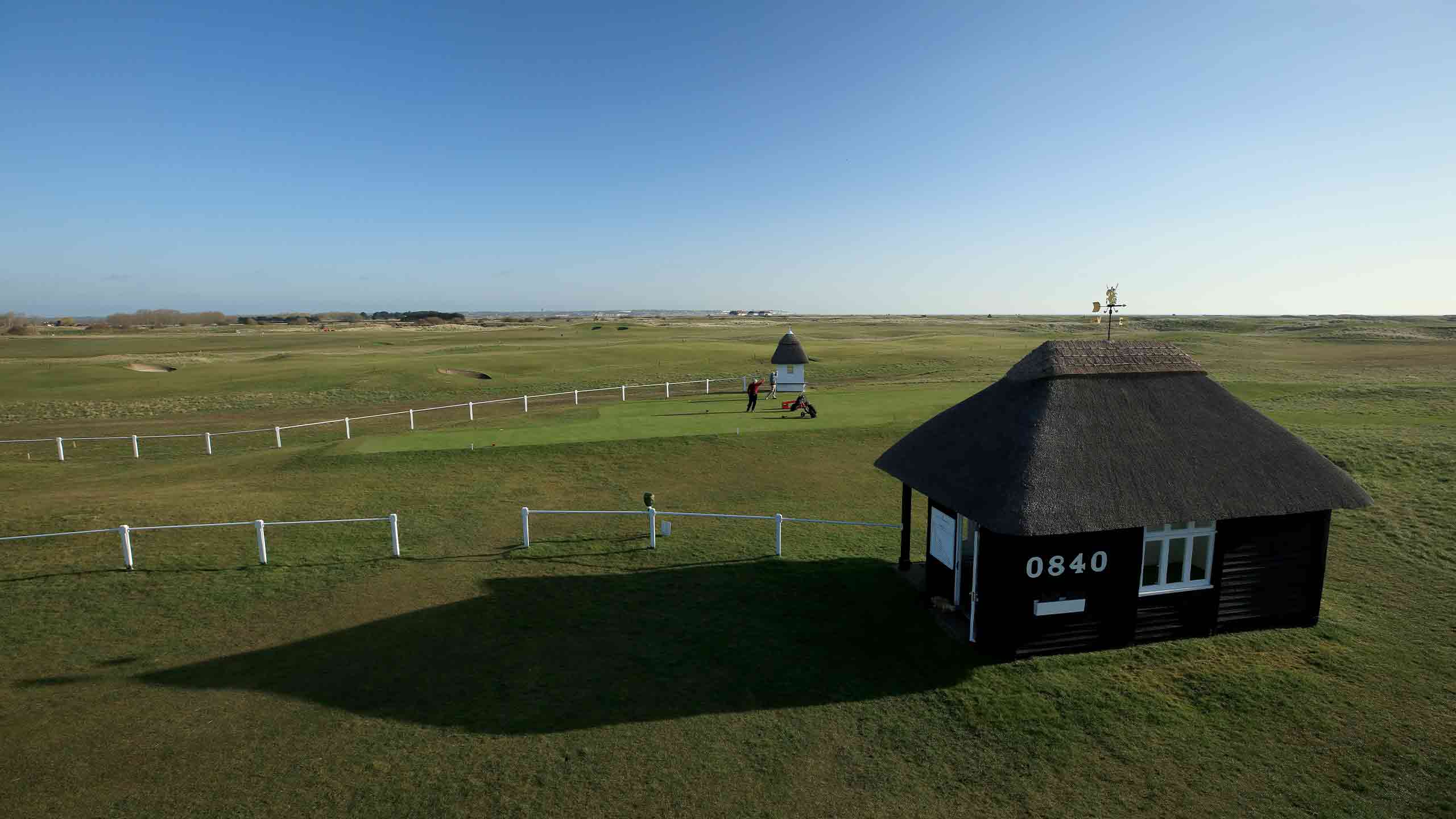At the crossroads of myth and time, and the natural world and championship golf, sits Royal St. George’s, a conduit to ancient days and the roots of the relatively newish links game. The town
of Sandwich, home to roughly 5,000 souls, is where you’ll find the golf course named for the patron saint of England, who lived so long ago that all we know of him is a mysterious blur of legends and dragons and crusades and disjointed hagiography.
The passage of time and timelessness are juxtaposed in Sandwich, in the county of Kent in southeast England, about as close as you can get to continental Europe while keeping your feet dry on the UK’s home island. In its heyday as a port — which had already come and gone 300 years before the first Open Championship, in 1860 — Sandwich sat hard by the sea, but over a millennium the Channel crept away, stranding the town two miles from the shoreline. The land revealed by nature’s retreat became home to Royal St. George’s and two neighboring courses that have also hosted Opens: Royal Cinque Ports, which in your dusty books of golf history is sometimes referred to as Deal, and Prince’s Golf Club. Royal St. George’s, as sturdy a test as they come, emerged as an anchor in the Open rota.



In distant days, the “wich” part of the town’s name meant a fortified place where trade took place. A steady stream of merchants and smugglers entered and exited the sandy-soiled market town via its port. In later years, the flow of golf as a global game ran through Sandwich, starting in 1894, when the Open at St. George’s marked the first time the competition moved beyond Scotland’s borders. The 94-player field was the largest up to that time and included 14 Scotsmen who took advantage of specially negotiated (by the R&A) railroad rates to make the journey to Sandwich, far from the golf hubs of Scotland. The rail-riding Scotsmen might have glimpsed some of Kent’s conical-roofed oast houses, where hops were dried as part of the brewing process. Another 21 Scots working club jobs in England also joined the fray.
The parochial little Open of the 1860s, ’70s and ’80s began to spread its wings in 1890, when John Ball became the first non-Scot and amateur to win the tournament. From that point on, England was in the Open to stay, and the Open was in England to stay. England’s J.H. Taylor won in 1894 at St. George’s, and 10 years later Walter Travis became the first American player to win the Amateur Championship, also at RSG. Time, having changed so much of the little town by the sea, now relaxed its grip on Sandwich and exerted its power on the game.
To explore the streets of Sandwich on a pleasant day is to experience small-town England and historic England all at once. Medieval structures are scattered about the town that has been the revolving door that opened England to outside influences since forever, including the Roman invasion of the island in 43 A.D. Thomas Paine lived in Sandwich for a time, right around when John Montagu, the Fourth Earl of Sandwich, was giving his name to the tasty goodness served up between slices of bread. The Fourth Earl also sponsored the voyages of Capt. James Cook, who “discovered” the Sandwich Islands (now known as Hawaii). The archipelago was one of the last great international finds of the age, but Royal St. George’s and the Kentish town associated with Cook’s benefactor have never ceased to broaden the international appeal of the Open Championship and golf.

The Open had its first winner from outside the UK in 1907, when Frenchman Arnaud Massy won at Royal Liverpool. In 1911, Massy forced Harry Vardon to a 36-hole playoff for the
Open title at Royal St. George’s. Should you seek to measure the greatest impact Royal St. George’s and Sandwich have had on opening up the Open to the world, you’d find it didn’t happen in the Open. It occurred in the 1904 Amateur Championship. Walter Travis was 42 years old and had been living in the United States for 20 years when he arrived to compete in the tournament. He was born in Australia but had been a citizen of the U.S. since 1890. He considered himself American, and so did his fellow competitors and observers at Royal St. George’s.
Looking on, Bernard Darwin called Travis “the little middleaged man from America with the black cigar … who had something of a black and Satanic air about him.” In Darwin’s defense, he also wrote that he had an “uncomfortable feeling that we ought to have tried harder to penetrate that uninviting reserve and gave up the effort too readily.”
Travis won, and championship golf had gone global. His efforts inspired younger generations, such as Walter Hagen, who became the first American-born player to win the Open Championship. He did so at Royal St. George’s in 1922, and again at the same club in 1928. Starting with Hagen’s first of four Open wins, no Scotsman won the title until Sandy Lyle returned the Claret Jug to its ancestral home in 1985.
Where did Lyle win? Where else but Sandwich.











